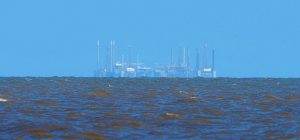This spring (2023), I’m teaching a course on energy and literature at Tampere University. I’ve finally updated the full course outline and reading list. All thoughts and feedback more than welcome! Full syllabus (pdf) here.

Outline and reading:
9.1 Welcome to the Energy Humanities
16.1 What energy, what humanities?
Reading:
Williams (forthcoming) “Energy Humanities” The Johns Hopkins Guide to Critical and Cultural Theory
Drees 2016: “Humans, Humanities and Humanism” Humanism and Technology
23.1 No class – group work
30.1 “Extraction.” First literature review presentation
Reading:
Yaeger 2011: editorial, “Literature in the Ages of…” PMLA pp. 305-310
Zola 1894: Germinal chapters I-II
6.2 “Stewardship.” Second literature review presentation
Reading:
Leopold 1949: Sand County Almanac pp. 201-226
Sacco 2020: Paying the Land pp. 33-50, 105-108, 263-265
13.2 “Allegory.” Third literature review presentation
Reading:
Aho 1883: “When Father Brough Home the Lamp”
Marx 1964: The Machine in the Garden pp. 169-179.
20.2 No class – group work
27.2 Spring break
6.3. “Utopia” Applied session
Reading:
Hossain 1905: “Sultana’s Dream”
Mookerjea-Leonard 2017: “Futuristic Technologies and Purdah in the Feminist Utopia: Rokeya S. Hossain’s ‘Sultana’s Dream’” Feminist Review
Optional reading: Ameel 2016: “Cities Utopian, Dystopian and Apocalyptic”
13.3. “Materiality” Visit to Tammerkoski hydroelectric plant
Optional reading:
Calvino 1974: “The Petrol Pump”
MacDonald 2013: “The resources of Fiction” Reviews in Cultural Theory
20.3 No class – individual work
27.3 “Agency” applied session
Reading/Viewing:
Woman at war / Kona fer í stríð” (2019); opening scene
Marcum: “Visible Legacies of Invisible Resources: Gas Infrastructure, Women, and Environmental Control in 1930s British Documentary Movement Films”
Extinction Rebellion 2021: “Press release”
30.4 Conclusion and open book exam
The course includes research literature sessions and applied sessions, which students prepare in group meetings. The course is structured along six key concepts: “Extraction”, “Stewardship”, “Allegory”, “Utopia”, “Materiality” and “Agency”.

Pingback: Presenting “Energy Humanities: Resources, methods, aims” at the KTS seminar, Turku | Urban Narratives
Pingback: “Flickering” reading of energy: presenting new work within the energy humanities at ACLA2024, Montreal | Urban Narratives